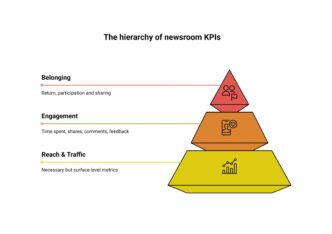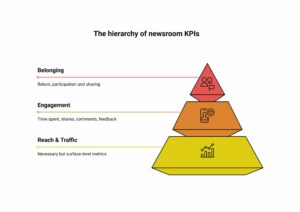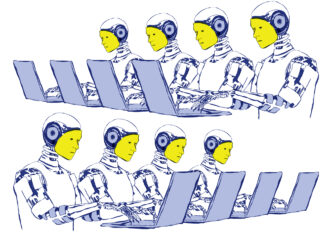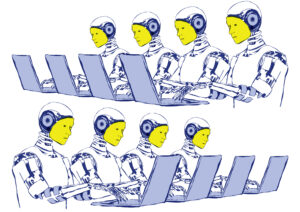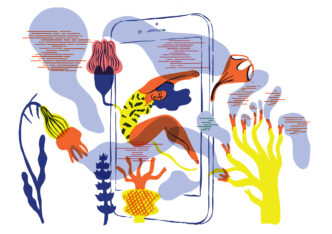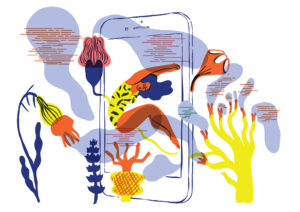

Digital Monetization Consultant and specialist in digital journalism & new business models, Pepe Cerezo has more than 15 years experience in the industry. Previously head of research & digital strategy at Prisa, he now works with Blue Engine Collaborative, WAN-IFRA and has authored multiple books, including the latest release, Deconstructing the media: How to adapt communication companies to the digital environment (available to purchase now).
We have always maintained that digital transformation is a multifaceted and constantly changing phenomenon that must cover all areas and people in an organization. But, it also has to be an end in itself, one that serves to rethink the role of print and, at the same time, helps to improve digital processes, diversifying revenue streams for sustainable growth.
The current publishing context
The media are suffering the consequences of a perfect storm. In the midst of a digital transformation era, still not over the effects of the pandemic, publishers are now faced with an uncertain and highly inflationary economic environment caused by the war in Ukraine.
These successive crises are irreversibly accelerating both the speed of and need for change.
And, although digitalization has been transforming newsroom design and layout for years, work processes and dynamics haven’t adapted at the same speed. Against this backdrop, a new management model is needed to meet the challenges facing the publishing industry.
Having said this, the role of tech teams and systems shouldn’t be undervalued. Uncertainty and instability has led publishers to seek partnerships, unlikely a few months ago, in the hope of making up for the shortage of editorial, tech and financial resources. Smaller or more economically challenged publishers have had to (and will continue to) explore the possibilities of collaborating, even with their former competitors, in favor of a common goal.
This acceleration process towards greater digitalization of the newsroom, together with a demand for revenue diversification and a move towards business partnerships, requires publishers to offer a wider variety of products and services – a new approach that has come to be called product thinking. Over the past 30 years, large tech companies in the Silicon Valley have worked with this product-focused mentality, understood as that which solves a user problem and is capable of generating business. First it was hardware companies, like Hewlett-Packard, then the Internet – eBay, Paypal, Google, Facebook – and now the media.
From User Experience to Client Experience
The transition towards digital reader revenue streams requires product-orientated structures. Not only does this represent a conceptual change but also an entire organizational transformation.
During the early phases of newsroom digitalization, companies were betting on the incorporation of digital transformation managers (CDO).
But, in this new context, native companies are betting on product managers (PM). Little by little, their role as architects of project development is consolidating, ranging from strategy and conceptualization, to execution, monitoring and commercialization.
PMs have therefore become a fundamental piece in the management of internal change.
It’s a PM’s role to establish structures that respond to reader needs at every step of their experience on your site, materializing in a clear understanding of the products and services offered throughout each and every area of the company. Given that a good digital experience is essential for converting readers into subscribers, and when working to retain these users over time (or even when allowing them to leave if they wish), this organizational change is essential for success in the new digital revenue environment.
New leadership for times of uncertainty
One of the novelties posed by this phase of digital transformation falls on the management teams that have to rethink their management model and, therefore, the search for new leadership.
Traditionally, journalistic organizations have been supported by vertical hierarchies with a strong degree of presidentialism. But the increasingly remote work environment requires a new form of leadership in which authority weighs less. Leaders in this new arena are obligated to foster collaboration, transparency, and communication.
Cultural change is one of the fundamental pieces needed in this process of adapting to a digital environment. In particular, managerial teams will have to learn to cope with the different demands of remote teams, including horizontal hierarchical relationships, flexible hours, as well as adapted performance indicators that differ from those established to date.
Covid certainly opened up this era of change, but it seems that the current context will likely accelerate this process, forcing those at the top of organizations to adapt. Because the experience and good practices of the past no longer ensure success in the new, more uncertain and volatile paradigm.
No less important than the change at the top is the need to reinforce and empower middle managers, a fundamental piece in the new scenario that will help the upper management layers (mostly made up of profiles in the wake of traditional management) in the digital transformation process. These teams will require and demand new organizational processes, made up of young teams with more horizontal hierarchies and persuasive leadership. In remote-working environments, trust relationships and result-focused KPIs prevail. It seems inevitable that, faced with this new scenario, many publishers will need to regenerate the upper part of the organization, both as a catalyst to promote digital culture and to accommodate talent from the middle layers.
For their part, non-management teams, primarily made up of millennials with a stronger digital culture, will demand new working conditions. In this way, internal communication becomes relevant as a vehicle to align the different areas of the company. Communication from management should be direct and regular, making it clear why certain decisions are made, reassuring teams and avoiding uncontrollable alternative information, preventing distractions and an unfriendly work atmosphere. All this with the aim of extending company values.
Ultimately, more horizontal models will be imposed, with performance indicators oriented towards efficiency. In the same way, projects for improvement and professional growth will be established where promotion trajectories are encouraged. Transparency will be inevitable if the company’s talent is to be retained.
In this sense, human resource departments will have to adopt a new role, with a notable digital leadership component. The so-called change management areas, or change offices, in addition to the usual responsibilities, will have to face new ones such as:
• Provide technological resources (equipment, wifi)
• Favor teleworking conditions (ergonomics, health and psychological support, etc.)
• Advanced coaching dynamics
• Design of new performance indicators
• Establishment of a professional roadmap within the company
• Internal communication
• Continuous training opportunities (sponsoring internal training and promoting and advising on self-training)
More efficient processes and workflows
Although there are organizations that have been implementing agile project management methodologies for a long time, especially in the technology area, it is still not the norm in most companies. The goal is to focus on providing a rapid response to user needs. It’s about providing the market with minimum viable products and services that are subsequently validated and enriched thanks to user feedback. That is why it is important to listen to them.
Organizational management has to rethink axioms that were thought to be unshakable. Given the widespread opinion that the success of the company lies in the people, in an increasingly changing and uncertain environment, it’s these processes that will make the difference between companies that can adapt and those that cannot.
Promote brand attributes
Finally, the digital brand should not only be thought of as a visual identity, but as a complete experience in and of itself. For almost a decade, the search for audiences have been directed at the platforms that needed to respond to algorithms before satisfying the demands and needs of readers. In this way, brand attributes have gradually become blurred. It’s now necessary to reinterpret (or revise) the relationship that companies have with their audience.
If you want to convince readers to subscribe, brand communities need have solid and differential attributes to stand out from the crowd. This requires a brand strategy and architecture for all channels, including the incorporation of new, specialized profiles.
In short, the media are situated in a land of intangibles. But a well-developed branding strategy brings competitive positioning to life and works to position it as a “something” in the minds of your projects and clients.

